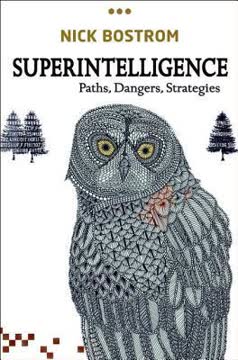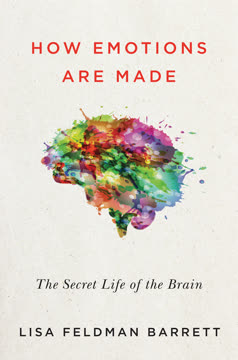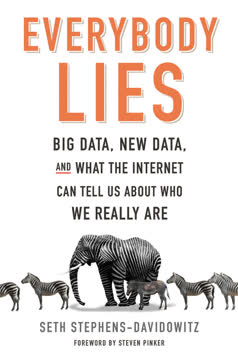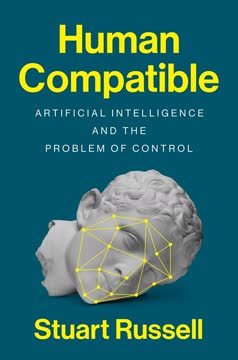Key Takeaways
1. Robots aren't human replacements, but supplements like animals.
Just like animals, robots don’t need to be a one-to-one replacement for our jobs or relationships.
Rethinking automation. The common narrative is that robots are coming to take our jobs and replace human relationships. However, this view is limited and deterministic. A more fruitful perspective, drawn from our history with animals, is to see robots as supplements to human abilities and relationships, not direct substitutes.
Leveraging different skills. Throughout history, humans have partnered with animals not because they replicate human skills, but because their unique abilities complement our own. From oxen plowing fields to dogs assisting hunters, animals have extended human capabilities. Similarly, robots can enhance what we do, allowing us to achieve things we couldn't alone.
New possibilities. By moving beyond the human-replacement mindset, we can design and integrate robots in ways that create new practices, solve new problems, and foster new types of relationships. This approach focuses on combining the strengths of humans and machines for mutual benefit, rather than a zero-sum competition for roles.
2. Our fear of robot takeover is often misplaced, driven by sci-fi and anthropomorphism.
Against the backdrop of broader economic and social anxiety, the conversation has turned from “Will robots replace me?” to “How soon will robots replace me?”
Sci-fi influence. Our perception of robots is heavily shaped by science fiction, which often portrays them as humanlike agents poised to take over jobs or even humanity itself. This narrative fuels exaggerated fears and moral panic, leading to headlines that predict widespread unemployment and artificial superintelligence threats.
Cultural differences. This fear isn't universal; in Japan, robots are often viewed more positively as helpful partners, reflecting a different cultural narrative. The Western "Frankenstein complex" of creations turning against their makers influences our anxieties more than the current reality of robotic capabilities.
Misdirected concern. Focusing on robots as quasi-humans distracts from the actual challenges. While technology will disrupt labor markets, the issue is less about robots inherently replacing people and more about how human decisions, economic systems, and corporate incentives drive these changes.
3. Robots possess different, narrow intelligence, not human general intelligence.
Our advancements in artificial intelligence, as amazing as they are, haven’t gotten anywhere near understanding how to create the adaptable, flexible general intelligence that a human, even a toddler, has.
Specialized skills. Current AI excels at narrow, well-defined tasks like recognizing patterns, performing calculations, or welding car parts with precision. However, they lack the broad, adaptable general intelligence that allows humans to understand context, handle unexpected situations, and multitask effortlessly.
Limitations in complex environments. Robots struggle with unpredictable environments. Self-driving cars face challenges with diverse road conditions and erratic human drivers. Delivery robots on sidewalks require remote human control to navigate obstacles like stairs or unexpected objects.
Faith vs. science. The belief that exponential computing power will soon lead to human-level or superintelligence is often based on faith rather than the current scientific understanding of AI's limitations. Experts in the field emphasize that creating complex, adaptable intelligence is far more difficult than simply increasing processing speed.
4. Historically, we've partnered with animals for work, weaponry, and transport, leveraging unique skills.
The reason we’ve partnered with animals is not because they do what humans do. We’ve partnered with them because their skills are different from ours, and because we have much more to gain from combining their strengths with our own.
Complementary abilities. For millennia, humans have harnessed animal capabilities that surpass our own.
- Oxen revolutionized farming by plowing land more efficiently than humans.
- Camels enabled long-distance trade across deserts due to their resilience.
- Horses provided speed for transport and warfare.
- Dogs offered enhanced senses for hunting, guarding, and detection.
Diverse applications. Animals have served in roles ranging from labor and transport to communication and warfare.
- Pigeons delivered messages and carried cameras.
- Ferrets threaded cables through pipes.
- Dolphins detected underwater mines and enemy divers.
- Elephants were used in ancient warfare.
Transformative impact. These partnerships fundamentally reshaped human societies, economies, and even landscapes. The domestication of animals led to settled agriculture, new concepts of ownership, and facilitated early globalization, demonstrating the transformative power of integrating nonhuman agents.
5. Assigning responsibility for robot harm draws parallels to animal liability laws, focusing on human accountability.
Today, as machines that can make autonomous decisions enter our daily lives, many view the harm they cause as a new challenge to our legal systems and our ideas of responsibility. We tend to forget that this situation isn’t brand new.
Historical precedent. The question of responsibility for harm caused by autonomous agents is not new; legal systems have grappled with animal-caused harm for millennia. Ancient laws, like the Code of Hammurabi and Biblical law, addressed liability for goring oxen, holding owners accountable if they knew the animal was dangerous.
Focus on human control and context. Historically, laws balanced the animal's autonomous action with the owner's responsibility.
- Strict liability applied in crowded areas (like English cities requiring livestock fences).
- Less strict liability applied in open spaces (like the American West where landowners fenced their property).
- Different rules applied to "wild" vs. "domesticated" animals based on inherent risk.
Avoiding robot personhood. Just as we no longer put pigs on trial, holding robots morally or legally accountable for harm is illogical. The danger lies in assigning robots too much agency, allowing companies or individuals to evade responsibility. Instead, we should draw on historical legal solutions that place accountability on the humans who design, deploy, or own the technology.
6. Our inherent anthropomorphism leads us to treat robots like living things, triggering empathy.
Perceiving robots as living things goes deeper than a simple novelty effect, and it ties directly into the biological hardwiring that motivates us to see ourselves in others.
Biological drive. Humans have an inherent tendency to anthropomorphize – projecting human traits onto nonhuman entities. This is rooted in our biological need to understand and predict the world, particularly other agents, and is triggered strongly by movement and social cues.
Beyond novelty. This isn't just about unfamiliar technology; studies show people treat computers and simple moving shapes as social actors, applying social conventions like politeness. Physical robots, even simple ones like vacuum cleaners, elicit even stronger, more visceral responses.
Empathy response. Our anthropomorphism triggers empathy towards robots, even when we know they can't feel. People feel uncomfortable "mistreating" robots that mimic distress, hesitate to turn them off, and even feel sad when they are damaged, demonstrating that our emotional response overrides our rational understanding.
7. Social robots are emerging companions, akin to pets, fulfilling diverse social needs.
But our tendency to bond with animals goes back much further in our history, and illustrates the depth and diversity of our social relationships, as well as why we create them.
Historical bonding. Humans have a long history of forming emotional bonds with animals, dating back to the domestication of dogs. While initially partnered for utility, animals like dogs and cats became companions, receiving burials and being treated as family members across various cultures and time periods.
Pets as companions. The role of pets has evolved from status symbols to integral family members, with people investing significant time, money, and emotional energy in their well-being. This demonstrates our capacity and desire for diverse social relationships that extend beyond humans.
Robots as new companions. Social robots, designed to interact and elicit social responses, are emerging as new forms of companions. Like pets, they can provide comfort, reduce loneliness, and offer non-judgmental interaction, potentially filling needs in contexts where human or animal companionship is difficult to access, such as elder care or therapy.
8. The real ethical concerns with robot companionship lie in coercion, bias, and privacy.
What keeps me up at night isn’t whether a sex robot will replace your partner, it’s whether the company that makes the sex robot can exploit you.
Exploitative potential. Our emotional attachment to companion robots creates opportunities for exploitation. Companies could leverage these bonds through subscription models, expensive upgrades, or targeted marketing that preys on users' feelings, similar to how industries capitalize on emotions in areas like pet care or weddings.
Bias in design. Artificial agents are often designed with human stereotypes, reinforcing harmful biases related to gender, race, and other demographics. This isn't always intentional but perpetuates societal prejudices, highlighting the need for diverse design teams and ethical considerations in development.
Privacy risks. Robots, especially social ones, collect vast amounts of personal data. This raises significant privacy concerns, as this data can be used for surveillance, manipulation, or targeted exploitation, mirroring issues seen with other data-collecting technologies like smart speakers and social media.
9. Western animal rights history reveals empathy, not logic, drives protection, highlighting our selective biases.
But it strikes me that our conversations are too focused on humanlike robots, and that our approach to animal rights may be more predictive of how this will play out in our world.
Inconsistent application. Western animal rights history is marked by inconsistency, often driven by selective empathy rather than consistent philosophical principles. Early laws protected animals based on classist notions of human behavior rather than animal suffering, and focused on relatable animals like dogs over others.
Empathy as a catalyst. Major shifts in animal protection have often followed public scandals and emotional appeals, such as the anti-vivisection movement galvanized by stories of suffering dogs or the "Save the Whales" campaign fueled by whale songs. This shows that sentiment, not just rational argument, drives public support for rights.
Bias over biology. Despite scientific evidence of animal sentience and suffering, our protection efforts remain biased. We prioritize animals we anthropomorphize or find "cute" (like baby seals) over others (like chickens in factory farms), demonstrating that emotional connection often outweighs biological criteria in determining who deserves protection.
10. Our inconsistent treatment of animals (pets vs. food) predicts how we'll relate to robots.
Our approach to animal suffering is rife with inconsistencies.
Selective morality. We exhibit profound inconsistencies in how we treat different animal species. We lavish care and expense on pets, even mourning their deaths, while simultaneously subjecting farm animals to conditions and slaughter methods we would never tolerate for our companions, despite scientific evidence of their capacity to suffer.
Cultural and economic factors. These inconsistencies are influenced by cultural norms, economic interests, and our emotional connections. The taboo against eating dogs in the US contrasts with its legality until recently and its practice elsewhere, highlighting how cultural context shapes our moral boundaries towards animals.
Predicting robot treatment. This history of selective empathy and inconsistent treatment based on relationship and utility provides a likely blueprint for how we will treat robots. Some robots will be mere tools, others companions, and our willingness to grant them protections or "rights" will likely depend more on our emotional connection and anthropomorphism than on their actual capabilities or sentience.
11. Empathy for robots, though complex, reflects our humanity and may influence our future behavior.
Our empathy is complex, self-serving, and sometimes incredibly misguided, but I’m not convinced that it’s a bad thing.
Empathy is real. Research confirms that people genuinely empathize with robots, even simple ones, experiencing physiological distress when they witness simulated "suffering." This response is tied to our inherent anthropomorphism and is not simply a rational assessment of the robot's state.
Potential for positive influence. While empathy can be biased and manipulated, it is also a fundamental driver of human kindness and social connection. Just as empathy for animals has fueled protection movements, empathy for robots might encourage us to reflect on our own behavior and potentially extend our circle of moral consideration.
A mirror to ourselves. Our interactions with robots, and the empathy they elicit, offer a unique opportunity for self-reflection. By observing how we treat and feel about machines that mimic life, we can gain deeper insights into our own nature, biases, and the complex interplay between our rational minds and emotional responses, potentially nudging us towards more consistent and compassionate behavior towards all beings.
Last updated:
Review Summary
The New Breed receives mixed reviews, with praise for its unique perspective on human-robot relationships through the lens of animal interactions. Readers appreciate Darling's accessible writing and thought-provoking ideas. Some find the book repetitive or lacking depth, while others are captivated by its insights into empathy, ethics, and the future of robotics. Critics argue it underestimates AI threats, but many find value in its reframing of robot-human dynamics. Overall, it sparks discussion on the evolving role of robots in society.
Similar Books










Download PDF
Download EPUB
.epub digital book format is ideal for reading ebooks on phones, tablets, and e-readers.




